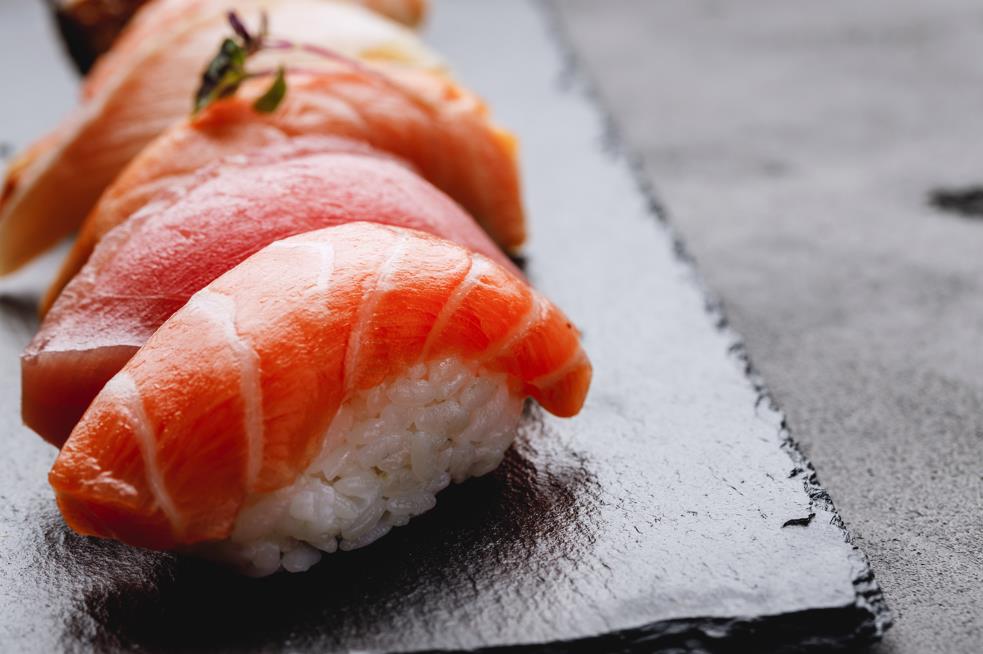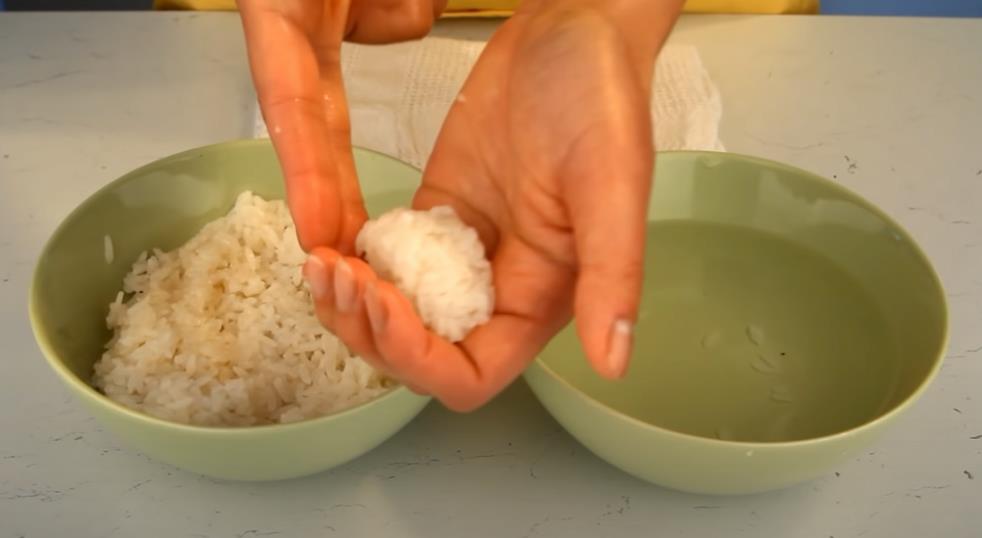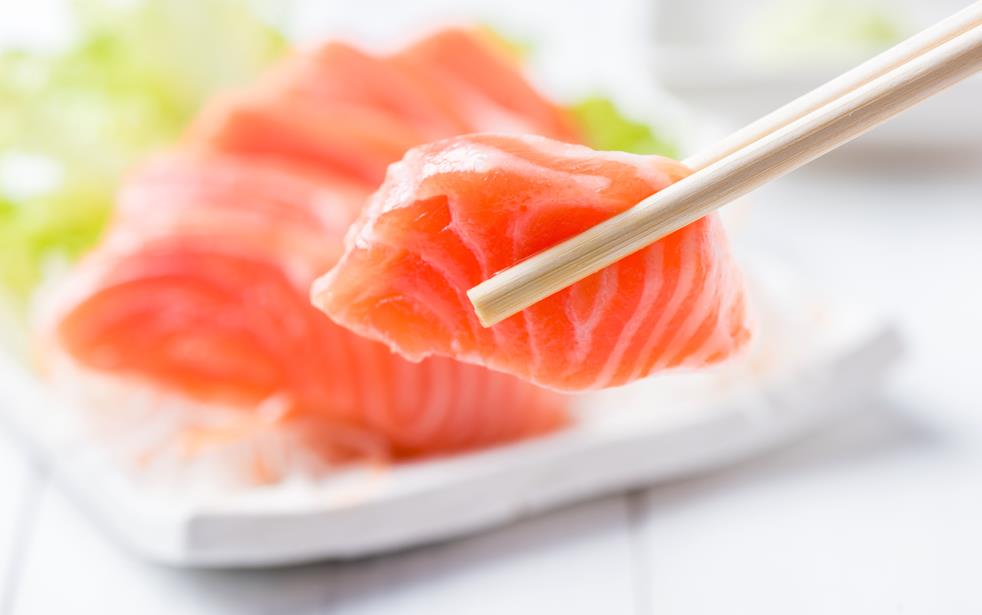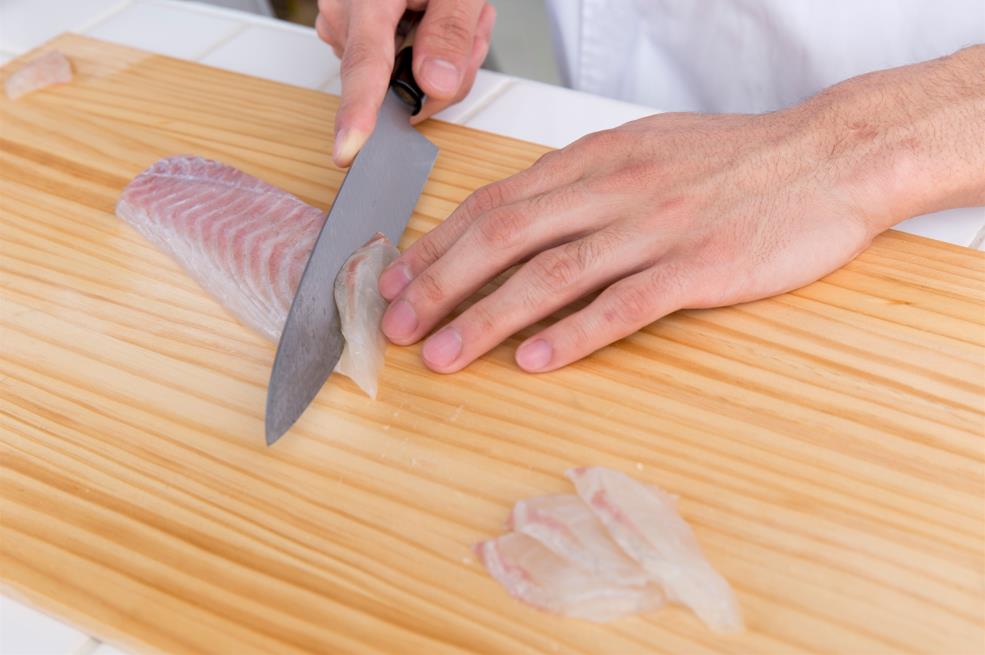There are a handful of traditional Japanese dishes that display raw fish. While sushi is the most common traditional Japanese dish that comes to mind first, it is wrapped between vinegared rice and nori. So there isn’t much raw fish to put on display.
The same can’t be said for some of its variations, though. Nigiri, also known as Nigirizushi, is a variation of sushi that’s often thought of as a separate dish. Japanese chefs refer to this as hand-pressed sushi. It has vinegared rice, the same as the traditional sushi, but without nori to wrap it.
Another traditional Japanese dish that has raw fish is sashimi. It’s easy to differentiate sashimi from nigiri because it only consists of raw fish or meat. Translating to pierced meat, sashimi requires top-quality raw seafood or meat and is always eaten raw, whereas sushi can have cooked or seared seafood.
These are the main differences between nigiri and sashimi, but there is more to discuss, from eating etiquette to raw ingredients used to how you prepare them. In this article, we’ll cover the differences and provide further information about these traditional Japanese dishes.
Table of contents
Nigiri
Nigiri is a type of sushi that doesn’t have nori to wrap the seasoned rice and other ingredients. Japanese chefs make a ball of rice, press down on it using their palm or two fingers to turn it into an oval shape, and top it with a touch of wasabi, though it is optional, and sliced fish. Nigiri is fundamentally sushi over rice.
How to make nigiri at home?

Nigiri is as simple as any dish can get, but the technique plays a big role. That’s why Japanese chefs train for years to become sushi masters.
The instructions to make Nigiri are pretty straightforward. Still, you’ll find yourself messing it up throughout the process. Leave your frustration aside if it gets challenging, and try until you get it right.
Step by step guide to making nigiri
Sushi rice
- First, you’ll need to prepare the sushi rice. Cook the rice normally, but check the instructions on your cooker for sushi rice. Gently clean the kombu with a damp towel and place it on the water before covering the lid. If you don’t have kombu, simply skip it, but it is highly recommended.
- Next is seasoning the rice. You can do this with packaged sushi seasoning or make it yourself by mixing 1/3 cups of rice vinegar, 3 tablespoons of sugar, and 1 and 1/2 tablespoons of salt.
- Regardless of your preferred method of seasoning, transfer the rice to a wet wooden bowl, known as Hangiri. If you don’t have it, any bowl that’s sizable enough works fine.
- While the rice is still hot, sprinkle the sushi seasoning and mix everything. Combine the rice and seasoning from the bottom to the top. Otherwise, the rice may break, and the seasoning won’t coat the rice evenly.
- Lastly, cool the rice by mixing it continuously and cover the bowl 2/3 of the way with a damp towel.
Fish
Keep these in mind before slicing the fish:
- Fillet the fish and trim off the excess parts like the sinew, if you haven’t done so already. Create a block of fish according to the number of slices. Aim for 3 inches wide blocks to have consistent lengths across all the nigiri.
- Always cut against the grain and utilize the right knife that’s incredibly sharp. Japanese specialty knives like the Yanagiba are notorious for making the best slices.
- Slice the fish thinly if it is a chewy one, like tuna or mackerel. Give more thickness to the slices if it is tender, like salmon or sardine, to add more texture to each bite.
Slicing the fish
- Place the fish on a cutting board and identify the grain direction.
- Slicing against the grain, adjust the position of the angle to the fish. The flatter you hold the knife, the wider the slices and vice versa. Adjust the knife’s angle according to how wide you want each slice – for most people, 45-degrees will be optimal.
- Slice the fish about 1/4 inch thick and as you’re 3/4 into the flesh, stand the knife upwards and make a vertical cut as your final one. This will give a smooth finish to the fish. Lay each slice on the cutting board to assemble later.
Assembling nigiri
Now comes putting everything together, which is the most challenging part as perfecting nigiri lies in the technique. Take your time and be patient with how you’re forming the rice.
Work with the rice

- Wet your hands with lukewarm water and take about 25 to 30 grams of rice.
- Place the rice at the base of your fingers and form it into an oval shape. Rice should cover about 80 percent of the fish slice’s surface. When choosing how much rice to use for each nigiri, take this into consideration.
- Rest the rice at the base of your fingers and put your thumb over it to keep it steady.
- Using your other hand, gently press down on the sides of the rice with your thumb and middle finger. After pressing down, use your index finger to press on the rice to flatten.
- Rotate the rice and follow Step 4 three to four times or until you perfect the shape.
The rice should be firm but breakable enough to separate. If it is too firm, it will be chewy. If too loose, it will fall apart before you have a chance to take it to your mouth.
Bringing everything together
- When you’re done making nigiri, the fish will stay on top, but that’s not how we start. Moist your hands and take the fish slice to the base of your fingers.
- Take a pinch of wasabi and spread it in the middle of the fish. This will give a great kick to each bite while holding the rice and fish together.
- Place the rice on top of the fish, making sure the fish is visible on both ends.
- Flip and shape the rice one last time.
And just like that, you’ve got your nigiri. Although explaining how to make nigiri is pretty straightforward, it takes time and dedication to perfect the technique. There’ll be plenty of trials and error with the consistency, texture, and forming everything together. The practice makes it perfect, and once you master it, everything will be worth it.
How to eat
Now comes the best part – eating! Many Japanese dishes are eaten with chopsticks, but nigiri is an exception. Even in formal dining settings, Nigiri is eaten with the hands – more so with the fingers, but chopsticks are just as fine. Take one piece of nigiri, dip the fish side into the soy sauce, and go for it. In between bites, cleanse your palate with fresh ginger.
How is it different from normal Sushi?
You can easily differentiate sushi from nigiri. Sushi has ingredients other than vinegared rice and seafood, like seaweed, avocadoes, cucumber, and pretty much anything else that you see fit. Nigiri only contains vinegared rice and seafood.
The same as sushi, you can also prepare nigiri with cooked or seared seafood, but this is more common with shrimp or octopus than fish.
Sashimi

Sashimi is a lot simpler than the typical sushi and nigiri. It’s basically thinly sliced raw fish or meat, often served with soy sauce, shredded daikon radish, wasabi paste, pickled ginger, and grated fresh ginger or garlic. These garnishes and condiments of sashimi not only add flavor but also kill harmful bacteria, making it safer to eat raw.
Typically, sashimi is the starter in the formal Japanese dining experience, but it can also be the main dish. It is widely considered by Japanese chefs that sashimi is the finest dish in Japanese cuisine and should be eaten before other dishes, especially the ones with strong flavors that can influence the palate.
Sashimi is always eaten raw and can have a variety of raw ingredients other than fish. This includes beef, pork, poultry, goat, and many others. As long as the raw meat is safe to eat or treated in a way that’s made safe, you can make sashimi out of it. Nonetheless, sashimi is typically made from seafood, oftentimes tender fish types.
How to make sashimi at home?
Although sashimi is mostly eaten at restaurants, you can make it at home as long as you have sashimi-grade fish.
These fish are caught, bled and gutted right away, and iced comprehensively, making them safe to eat. Ask your local fisherman if they have sashimi or sushi-grade fish; both terms are used interchangeably. The chances they have are high if you live in the coastal cities. Still, be cautious and make sure you’re getting your fish from a reputable source.
Slicing the fish

Like the way you slice fish for nigiri, you can do the same for sashimi. However, there isn’t one way to slice fish or meat for sashimi. You can utilize different slicing techniques, such as usu-zukuri, sogigiri, and hira-zukuri. Learn more about these cutting techniques for sashimi.
Once you cut the fish, put a few slices on shiso leaves and spread the condiments and garnishes around the same plate. With that, you have sashimi. It’s as simple as that, but make sure to get the slicing technique right to have bites that melt in your mouth.
Best knife to cut fish
Get 11% off and free shipping – limited time only!
Kinds of fish for sashimi
Sashimi is made from a wide variety of fish. However, since sashimi consists of pretty much only raw seafood, fish types with low contaminants such as mercury are favored more than others.
Still, tuna, salmon, and yellowtail are the most common fish types used for sashimi, favored for their high-fat content.
How to eat
While you can eat nigiri with your hands, sashimi should always be eaten with chopsticks – the reason being not just the etiquette, but also the food safety.
Sashimi is simply sliced fish or meat. Involving your hands when eating increases the risk of food poisoning. For this reason, stick to chopsticks when eating sashimi and the condiments of it.
Differences between nigiri and sushi
By now, you should have a firm understanding of the differences between sashimi and nigiri. Both of these Japanese dishes contain animal protein, but sashimi is always raw, whereas nigiri can include lightly cooked or seared fish.
Additionally, nigiri is a variety of sushi and has vinegared rice. Sashimi, being only raw seafood or meat, comes with garnishes to clear the palate. These garnishes and condiments aren’t mixed with sashimi and are eaten between bites.
FAQs
Are nigiri & sashimi cooked or raw?
Sashimi is always raw. The same typically applies to nigiri. It can have cooked or lightly seared fish as with any other sushi. Ask the Itamae, the sushi chef, to cook the fish if that’s how you want it, but never with sashimi.
Is Sashimi safe to eat?
The risk of food poisoning is considerably higher with sashimi, as it’s only sliced raw animal protein, often seafood served with garnishes. Still, the sashimi-grade fish is safe to eat raw. If you’re eating at a well-established restaurant or getting your fish from a trusted store when making sashimi at home, it’s completely safe to eat.
What are the health benefits of eating sashimi?
Sashimi is a great source of protein and omega-3 fatty acids. It has 30 to 40 calories in every ounce of sashimi, making it one of the best sources of protein when on a diet to lose weight. Sashimi can also be utilized to help control appetite.
Takeaway
Nigiri is simply sushi over rice, and sashimi is plain sliced raw seafood or meat, often tender fish. They may look very similar at times, but looking for rice underneath the fish slice will differentiate everything. Read more kitchen tips on the HDMD Knives Blog.












